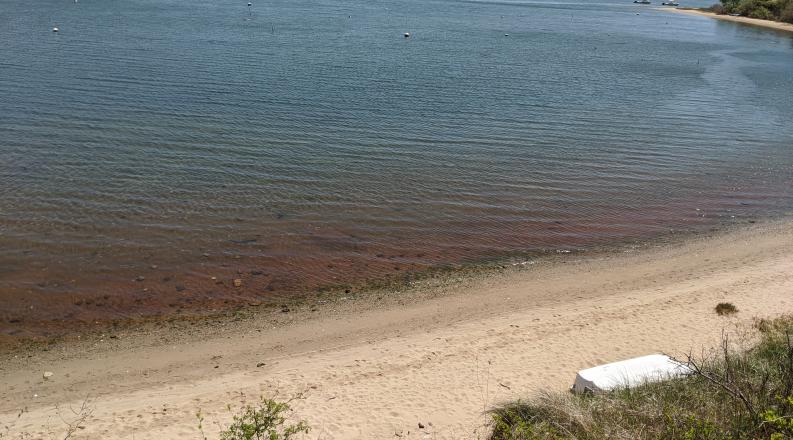Nitrogen and iron-rich groundwaters discharging into a Cape Cod embayment. The dissolved iron is quickly oxidized, creating a “rusty” colored water.
By: Tiffany Whitfield
A new global study, led by researchers from thirteen worldwide universities, including Old Dominion University, reveals that submarine groundwater discharge can rival the nutrient loads carried to coastal waters by rivers. Researchers, including Joseph Tamborski, assistant professor in Ocean and Earth Sciences recently published their findings in Nature Reviews Earth & Environment.
Over half of the world's population lives along the coast. Society has an environmental and economic obligation to monitor and manage coastal water quality. "While we often think about rivers carrying nutrients and contaminants to the coasts, we do not often think of groundwater, an "invisible" pathway," said Tamborski. He along with colleagues from around the globe studied the inner workings of coastal groundwater.
"We can see rivers flowing into the ocean, but we often cannot see groundwater discharge, which occurs over a much broader area," said Tamborski. "As a result, submarine groundwater has remained understudied and often neglected by coastal water quality managers."
The collaborative study reviewed documented cases of submarine groundwater discharge from over 200 worldwide locations, from 31 countries. The study synthesized dissolved major nutrient fluxes from groundwater and found that groundwater discharge exceeded riverine inputs in 60% of the studies.
Sources of nutrients to fresh groundwater include septic waste and fertilizers. However, nutrients are also added to the coastal zone from saline groundwater that circulates through marine sediments, recycling decomposing organic material. When these nutrients enter the coastal ocean, they can help sustain local marine productivity; however, too much nutrient loading results in the proliferation of algal biomass and negatively impacts coastal water quality.
The U.S. Supreme Court has recently ruled that the federal Clean Water Act applies to groundwater discharging to the ocean. "We need to think of the coastal zone as a connected system. What happens on land, and in our coastal aquifers, will impact our coastal water bodies," says Tamborski. At Old Dominion University, researchers will begin monitoring submarine groundwater discharge and nutrient cycling in the tributaries of the lower Chesapeake Bay.



